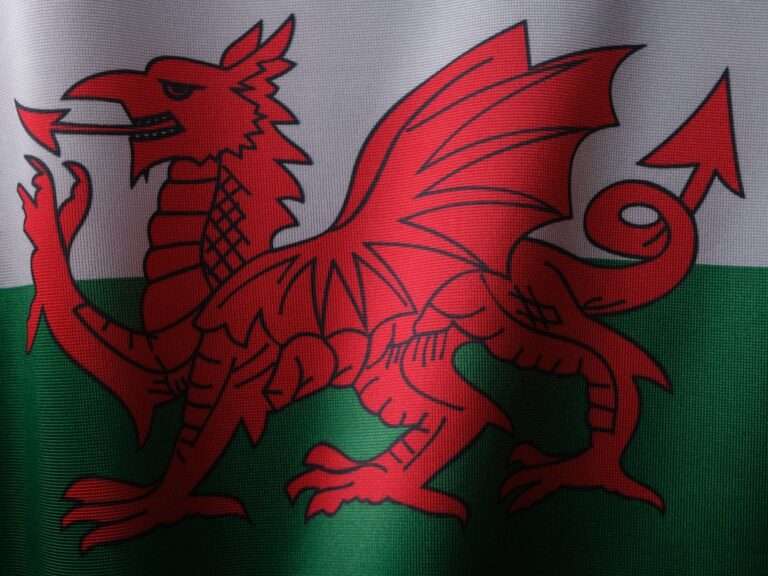Unmasking the Symbolism: Exploring the Deeper Meanings Behind The Mask

Symbols and archetypes have a profound impact on our lives, shaping our thoughts, beliefs, and actions. They are powerful tools that help us understand and navigate the world around us. Symbols are objects, images, or ideas that represent something else, often carrying deep cultural or personal significance. Archetypes, on the other hand, are universal patterns or themes that are found across different cultures and time periods. They tap into our collective unconscious and provide us with a framework for understanding ourselves and the world.
Understanding the significance of symbols and archetypes is crucial because they influence our perceptions, behaviors, and relationships. They can evoke strong emotions and trigger deep-seated memories. By recognizing and interpreting these symbols and archetypes, we can gain insight into ourselves and others, as well as the larger forces at play in our lives.
Key Takeaways
- Symbols and archetypes have a powerful impact on our identity and persona.
- Masks are a symbol of identity and persona, but can also represent the deceptive trickster archetype.
- Confronting the shadow self is necessary to fully understand the dark side of the mask.
- The hero’s journey can use the mask as a tool for transformation and growth.
- Masks have universal symbolism and can reflect both feminine and masculine archetypes, as well as serve as a gateway to the divine.
The Mask as a Symbol of Identity and Persona
A mask is a physical object that covers the face, often used in rituals, ceremonies, or performances. Masks have a long history and hold great cultural significance in various societies around the world. They can be made from a variety of materials such as wood, clay, or fabric, and are often adorned with intricate designs or symbols.
Masks serve as a symbol of identity and persona because they allow individuals to assume a different role or character. When wearing a mask, one can temporarily shed their own identity and take on the characteristics of another person or entity. This transformation can be liberating and empowering, allowing individuals to explore different aspects of themselves or to embody qualities they admire.
The Archetype of the Trickster: Unveiling the Deceptive Mask
The trickster archetype is a common theme found in mythology and literature across cultures. The trickster is a mischievous character who uses deception and cunning to achieve their goals. They often wear masks to hide their true intentions and manipulate others.
Trickster figures, such as Loki in Norse mythology or Coyote in Native American folklore, use masks as a tool to deceive and trick others. They are masters of disguise, able to change their appearance and assume different identities at will. By wearing masks, they are able to navigate social situations and manipulate others to their advantage.
The Shadow Self: Confronting the Dark Side of the Mask
| Topic | Metric |
|---|---|
| Book Sales | 100,000 copies sold |
| Author | Connie Zweig and Jeremiah Abrams |
| Publication Date | 1990 |
| Genre | Psychology, Self-help |
| Pages | 288 |
| Rating | 4.2/5 on Goodreads |
| Summary | A guide to understanding and integrating the shadow self, the darker aspects of our personality, to achieve wholeness and personal growth. |
The shadow self is a concept developed by psychologist Carl Jung, referring to the unconscious aspects of our personality that we repress or deny. These are the parts of ourselves that we deem unacceptable or undesirable, such as our fears, insecurities, or aggressive impulses. Masks can be used to hide our shadow selves, allowing us to present a more socially acceptable version of ourselves to the world.
However, it is important to confront and integrate our shadow selves in order to achieve wholeness and personal growth. By acknowledging and accepting our dark side, we can better understand ourselves and others. Masks can serve as a tool for this process, allowing us to explore and express different aspects of our personality in a safe and controlled manner.
The Hero’s Journey: The Mask as a Tool for Transformation
The hero’s journey is a common archetype found in mythology and literature. It follows the journey of a hero who embarks on a quest, faces various challenges and trials, and ultimately undergoes a transformation. Masks can play a significant role in this transformation process.
In many hero stories, the protagonist wears a mask or assumes a different identity in order to achieve their goals. This mask allows them to tap into hidden strengths or qualities that they may not have been aware of before. By wearing the mask, they are able to overcome obstacles and become the hero they were destined to be.
The Collective Unconscious: The Universal Symbolism of Masks

The collective unconscious is a concept developed by Carl Jung, referring to the shared reservoir of knowledge and experiences that all humans possess. It is the source of our archetypes and symbols, including the symbolism of masks.
Masks are a universal symbol found in all cultures, representing various themes such as transformation, protection, or disguise. They can be found in religious rituals, ceremonies, and performances around the world. For example, in African cultures, masks are often used in initiation ceremonies or to communicate with ancestral spirits. In Japanese Noh theater, masks are used to portray different characters and emotions.
The Feminine Archetype: The Mask as a Reflection of the Goddess
The feminine archetype represents the qualities traditionally associated with femininity, such as nurturing, intuition, and creativity. Masks are often used to represent the goddess in various cultures, embodying these feminine qualities.
In ancient Greek mythology, for example, the goddess Athena is often depicted wearing a helmet or mask. This represents her wisdom and strategic thinking. In Hinduism, masks are used to represent various goddesses such as Kali or Durga, who embody power and destruction.
The Masculine Archetype: The Mask as a Representation of the Warrior
The masculine archetype represents the qualities traditionally associated with masculinity, such as strength, courage, and assertiveness. Masks are often used to represent the warrior in various cultures, symbolizing these masculine qualities.
In Native American cultures, for example, warriors would wear masks during battle to intimidate their enemies and protect themselves from harm. In Japanese samurai culture, masks were worn to instill fear in their opponents and to hide their emotions.
The Spiritual Dimension: The Mask as a Gateway to the Divine
Masks have a spiritual dimension and are often used in religious practices and rituals. They can serve as a gateway to the divine, allowing individuals to connect with higher powers or spiritual realms.
In many indigenous cultures, masks are used in ceremonies to communicate with ancestral spirits or to invoke the presence of gods and goddesses. In African tribal rituals, masks are worn by dancers to embody the spirits of their ancestors. In Hinduism, masks are used in religious festivals and processions to honor various deities.
Embracing the Masks We Wear, Uncovering Our True Selves
In conclusion, symbols and archetypes, such as masks, have a profound impact on our lives. They shape our identities, influence our behaviors, and provide us with a framework for understanding ourselves and the world. By recognizing and interpreting these symbols and archetypes, we can gain insight into ourselves and others, as well as the larger forces at play in our lives.
Masks serve as a symbol of identity and persona, allowing individuals to assume different roles or characters. They can also be used to hide our shadow selves, the unconscious aspects of our personality that we repress or deny. However, it is important to confront and integrate our shadow selves in order to achieve personal growth.
Masks can also be a tool for transformation and growth, as seen in the hero’s journey archetype. By wearing a mask or assuming a different identity, individuals can tap into hidden strengths or qualities that they may not have been aware of before.
Furthermore, masks have a universal symbolism found in all cultures. They represent various themes such as transformation, protection, or disguise. They are used to represent the feminine archetype, embodying qualities such as nurturing and creativity. They are also used to represent the masculine archetype, symbolizing qualities such as strength and courage.
Masks have a spiritual dimension and are often used in religious practices and rituals. They serve as a gateway to the divine, allowing individuals to connect with higher powers or spiritual realms.
In embracing the masks we wear, we can uncover our true selves. By understanding and accepting the different aspects of our personality, including our shadow selves, we can achieve wholeness and personal growth. Masks are powerful tools that can help us on this journey of self-discovery and transformation. They remind us of the power of symbols and archetypes in our lives and the profound impact they have on our understanding of ourselves and the world.
If you’re interested in exploring more about symbolism, you might find the article on “Symbolism of the Moon” intriguing. The moon has long been associated with various meanings and interpretations across different cultures and belief systems. From its connection to femininity and emotions to its representation of cycles and transformation, the moon holds a significant place in symbolic imagery. To delve deeper into this fascinating topic, check out the article on Symbolism of the Moon at Symbolism Hub.
FAQs
What is symbolism?
Symbolism is the use of symbols to represent ideas or qualities. It is a literary device that enhances the meaning of a text by adding layers of significance to it.
What is the mask?
The mask is a symbol that represents concealment, deception, and transformation. It is often used in literature and art to explore themes of identity, duality, and the human psyche.
What is the significance of the mask in literature?
The mask is a powerful symbol in literature because it allows authors to explore complex themes and ideas in a visual and tangible way. It can represent the hidden aspects of a character’s personality, the tension between appearance and reality, and the transformative power of art and imagination.
What are some famous examples of the mask in literature?
Some famous examples of the mask in literature include the mask worn by the character of V in Alan Moore’s “V for Vendetta,” the mask worn by the character of the Phantom in Gaston Leroux’s “The Phantom of the Opera,” and the mask worn by the character of the Joker in various Batman comics and films.
What is the cultural significance of the mask?
The mask has a long and rich cultural history, with different cultures using masks for various purposes, such as religious ceremonies, theatrical performances, and social events. Masks can represent gods, spirits, ancestors, and animals, and are often used to connect with the spiritual world or to express social and cultural identity.





